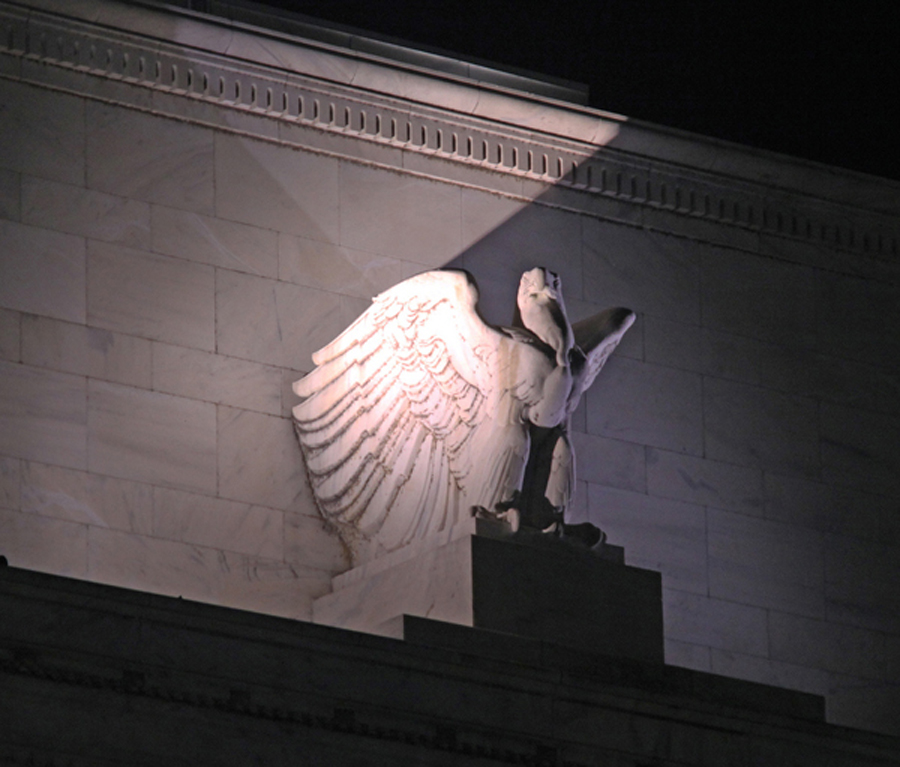
On Thursday the price of gold added to its gains in the wake of the US Federal Reserve’s decision about the pace of interest rate hikes with December futures trading on the Comex market in New York exchanging hands at $1,344.60 an ounce in early trade, up almost 1% from yesterday.
Gold touched a two-year high in July around $1,380 an ounce and year to date the metal is up more than 25% or $280 an ounce, one of its best annual performances since 1980.
The Fed was keen to draw a line under the great recession in December by raising rates from near zero where it had been for seven years
What has become a rule of thumb for some participants on the gold market is that rising interest rates means a declining gold price. Higher yields raises the opportunity costs of holding gold because the metal provides no income.
Since the global financial crisis the inverse relationship between interest rate expectations and the gold price has only become tighter with some analysts believing it can serve as an early warning system of both the direction and magnitude of the move in rates.
The Fed was keen to draw a line under the great recession by raising rates from near zero where it had been for seven years. With a fall below $1,050 shortly after the Fed’s December announcement, a large chunk of gold’s gains over the period of ultra-loose monetary policy and unconventional monetary stimulus, had been wiped out.
But it also marked the end of gold’s four-year decline from record highs in non-inflation adjusted terms struck August 2011. MarketWatch quotes Brien Lundin, editor of Gold Newsletter, as saying a similar pattern may be playing itself out this year:
“Once that was out of the way, the ‘buy the rumor, sell the news’ dynamic kicked in…and gold started rising almost immediately
“A rate hike in December would feature some interesting symmetry, since last year’s lone rate hike also came at the FOMC’s December meeting. It also marked the low in gold, and the end of the long bear market for the metal.
“Back then, there was tremendous speculative selling pressure as every paper gold trader was betting on the timing of the Fed’s move,” he said. “Once that was out of the way, the ‘buy the rumor, sell the news’ dynamic kicked in…and gold started rising almost immediately.
“A similar phenomenon would likely be associated with another December decision this year.”
Higher US interest rates boosts the dollar which also has a close inverse relationship to commodity prices and gold in particular. The index fell to 95 against the currencies of the country’s major trading partners after the Fed’s hold on rates.
The dollar is now slightly below levels this time last year after briefly spending time above 100 in March and November last year. The last time the currency topped 100 for a sustained period was in the early 2000s.
Today’s level compares to a record low of 71.6 in April of 2008 and a record high of 164.72 in February 1985 when the price of gold bottomed at $284.25 an ounce.